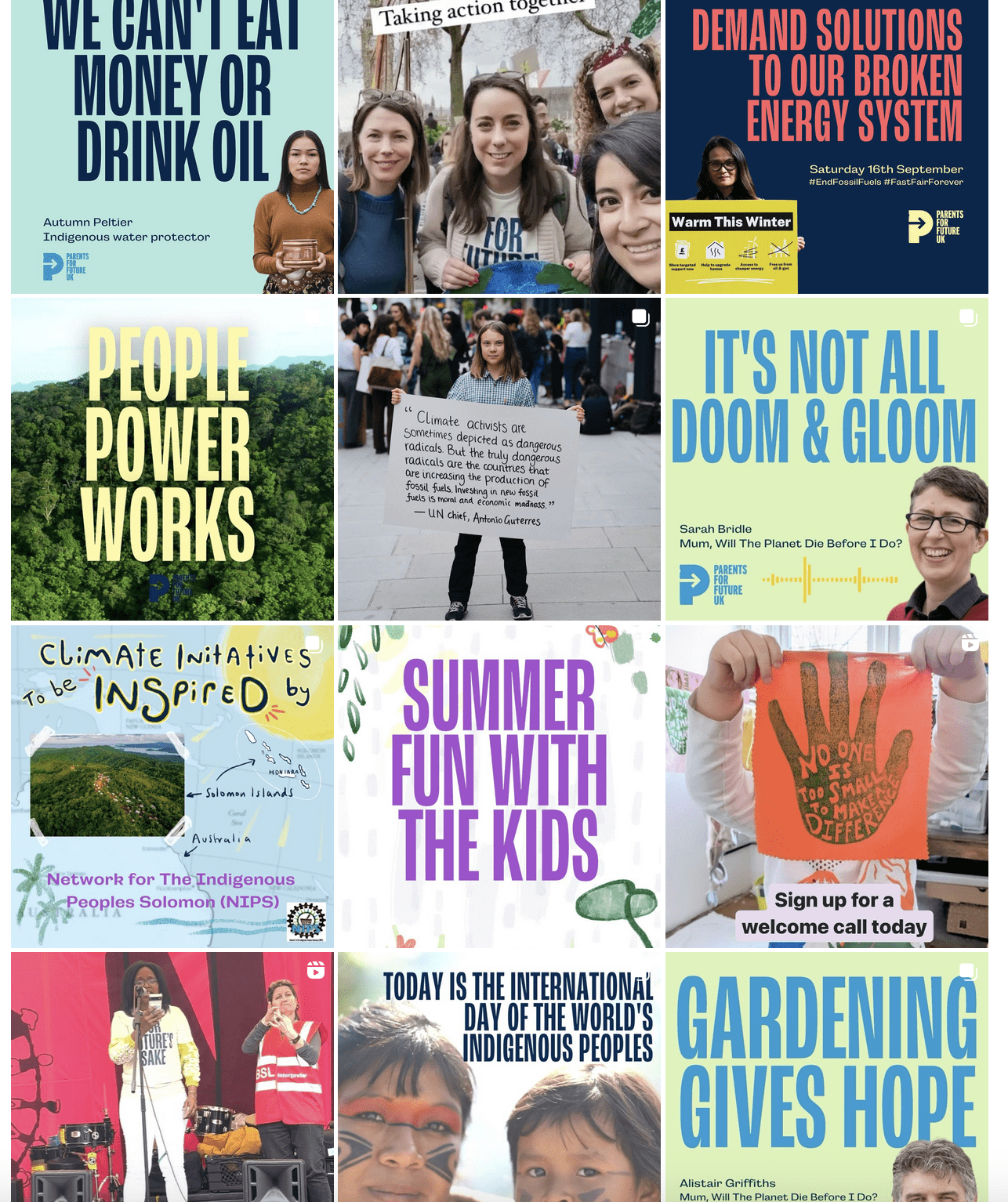How can campaigners make an impact among a barrage of information?
As a designer trying my best to support organisations and people who I think are doing good in the world, I’m very much used to working with miniscule or non-existent distribution budgets. This means much of my work ends up in the feed—that unrelenting stream of words and pictures, takes and opinions and culture wars and stats and twenty-year olds having emotional reactions for likes.
Cynical millennial that I am, I’m finding myself becoming more and more numbed, not just to the content I’m consuming, but to the designs I’m creating. I struggle with the idea that we’re having to play this game of social change in an arena built by neoliberal capitalists, on a field that’s constantly being shaped and reshaped by insane libertarian tech misanthropists.
The feed flattens everything. It places a cute cat video next to a flaming inferno in Greece, Maui, Canada, etc, etc. It commodifies content into units that can be monetised—even catastrophic events can be harvested for views, likes, comments and ultimately ad bucks. How can we make an impact from inside this barrage of content designed for passive scrolling? I don’t think we can.
We need to get people off the feed. The feed wants you to think that to post is to act. That opinions are activism, and that your online identity is more important than your offline actions. But we know that real gains are made primarily offline, in unions, on picket lines, in communities.
But how do I square this with my role as a graphic designer? To a hammer everything is a nail, and to a graphic designer in 2023 everything is an Instagram carousel.
My recent work with Parents for Future gives me some hope. The answer is community, and the solution lies outside the feed. Through a mix of irl and online—from the school gates to the WhatsApp to the Facebook group to the local park—PFF is growing and broadening a network of people who have a real investment in the future: their kids.
This gives me comfort as a designer. I’m more confident in the role of design and communication here—my job is to strengthen their sense of self as an organisation, to more effectively communicate the joy and passion and cohesion of their activity, and give them the tools to encourage people out of the feed and into the Zoom call, community centre or school hall.

The role of the feed for PFF is to build the relationship between the organisation and their followers, to radiate the passion, positivity, community and courage that they could be a part of. It’s less about hammering home the problem, more about embodying a solution—the bulk of which exists off-feed. Organisations like PFF can use platforms like Instagram and Facebook to build a kind of brand aura—an appealing periphery that helps draw people in. It’s all very well trying to get engagement on individual social media posts, but the ultimate goal is to get real, in-person engagement.
It’s easy to get disillusioned with this job (especially when you’re as cynical as I am), but this is an example of keeping the bigger picture in mind. Taking your laser focus off the effectiveness of one individual piece of design, and understanding a brand’s online presence as an atmosphere around the planet that is the actual group and their real-life work. Make it breathable, habitable, warm and inviting, and let the people do the rest.
Leave a Reply